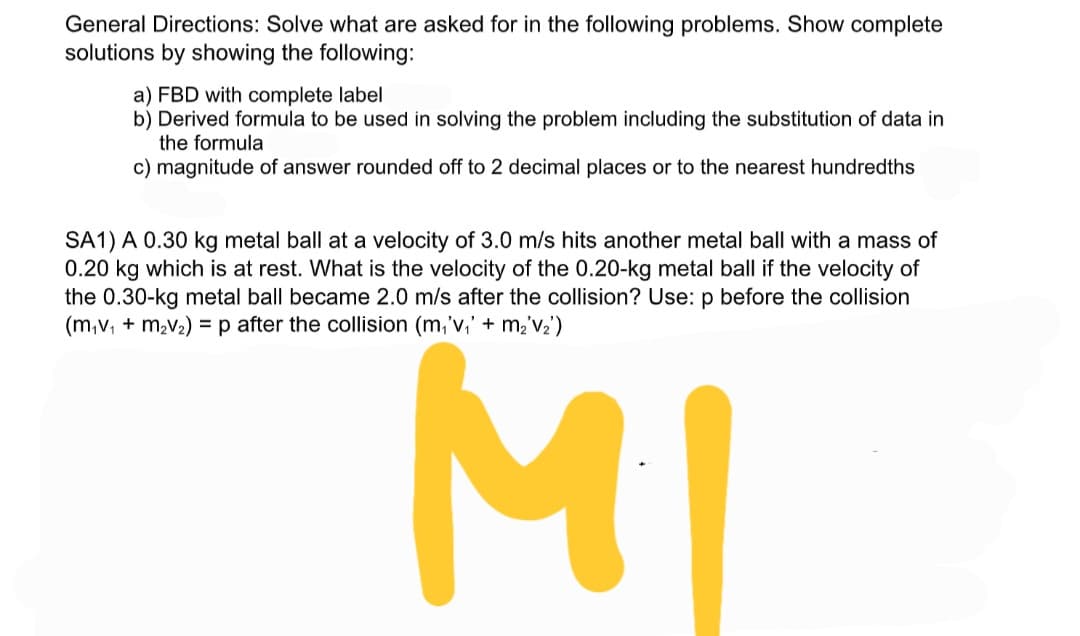General Directions: Solve what are asked for in the following problems. Show complete solutions by showing the following: a) FBD with complete label b) Derived formula to be used in solving the problem including the substitution of data in the formula c) magnitude of answer rounded off to 2 decimal places or to the nearest hundredths SA1) A 0.30 kg metal ball at a velocity of 3.0 m/s hits another metal ball with a mass of 0.20 kg which is at rest. What is the velocity of the 0.20-kg metal ball if the velocity of the 0.30-kg metal ball became 2.0 m/s after the collision? Use: p before the collision (m,v, + m,v2) = p after the collision (m,'v,' + m,'V2') %3D
General Directions: Solve what are asked for in the following problems. Show complete solutions by showing the following: a) FBD with complete label b) Derived formula to be used in solving the problem including the substitution of data in the formula c) magnitude of answer rounded off to 2 decimal places or to the nearest hundredths SA1) A 0.30 kg metal ball at a velocity of 3.0 m/s hits another metal ball with a mass of 0.20 kg which is at rest. What is the velocity of the 0.20-kg metal ball if the velocity of the 0.30-kg metal ball became 2.0 m/s after the collision? Use: p before the collision (m,v, + m,v2) = p after the collision (m,'v,' + m,'V2') %3D
Chapter3: Energy And Conservation Laws
Section: Chapter Questions
Problem 1C: Rank the following three collisions in terms of the extent of damage that the car would experience....
Related questions
Topic Video
Question
100%
Follow the instructions. Typewritten for upvote. No upvote for handwritten. Thank you

Transcribed Image Text:General Directions: Solve what are asked for in the following problems. Show complete
solutions by showing the following:
a) FBD with complete label
b) Derived formula to be used in solving the problem including the substitution of data in
the formula
c) magnitude of answer rounded off to 2 decimal places or to the nearest hundredths
SA1) A 0.30 kg metal ball at a velocity of 3.0 m/s hits another metal ball with a mass of
0.20 kg which is at rest. What is the velocity of the 0.20-kg metal ball if the velocity of
the 0.30-kg metal ball became 2.0 m/s after the collision? Use: p before the collision
(m,v, + m,v2) =p after the collision (m,'v,' + m,'V2')
MI
Expert Solution
This question has been solved!
Explore an expertly crafted, step-by-step solution for a thorough understanding of key concepts.
Step by step
Solved in 3 steps with 1 images

Knowledge Booster
Learn more about
Need a deep-dive on the concept behind this application? Look no further. Learn more about this topic, physics and related others by exploring similar questions and additional content below.Recommended textbooks for you

